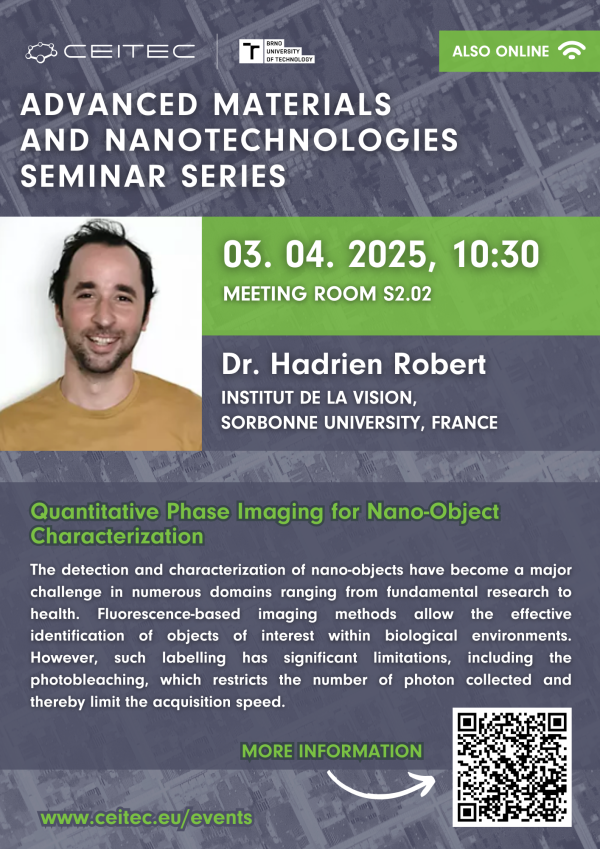O akci
The detection and characterization of nano-objects have become a major challenge in numerous domains ranging from fundamental research to health. Fluorescence-based imaging methods allow the effective identification of objects of interest within biological environments. However, such labelling has significant limitations, including the photobleaching, which restricts the number of photon collected and thereby limit the acquisition speed. In addition, this method, being not quantitative, does not allow for instance to measure the mass of the object of interest. By contrast, label-free techniques are more suitable for observing and characterizing nano-objects. Among these techniques, the characterization of nanoparticles with quantitative phase imaging (QPI) (Gentner et al., 2024) and interferometric scattering (iSCAT) microscope (Robert et al., 2021) have become promising approaches thanks to their holographic nature allowing to directly probe a volume to finely characterize nano-objects.
-
Gentner et al., ACS Nano 2024, 18, 29, 19247–19256.
- Robert, et al., Nat Commun 12, 2921 (2021).



